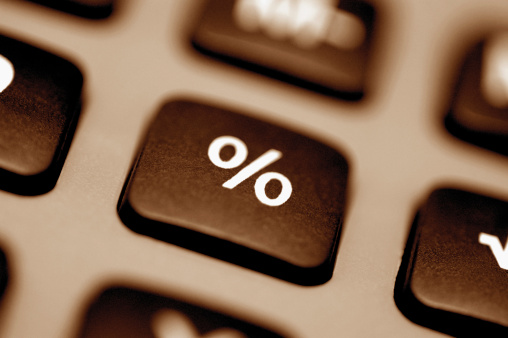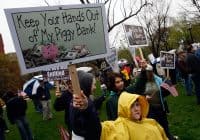Investors have had years and years now to prepare for a Federal Reserve interest rate hike cycle in the United States. There remains much debate on the magnitude of how much tightening will be seen, how fast that tightening will actually take short-term interest rates up once it starts, and ultimately how high the interest rates will really go.
That being said, there is about to be a very large discrepancy in the world of how central banks are treating their economies. The United States may be followed by the United Kingdom in an interest rate hike cycle, while the European Central Bank, the Bank of China, the Bank of Japan and many central banks in South America and other growth markets are still figuring out how to ease rates or to keep pursuing their own quantitative easing measures.
24/7 Wall St. has a question — Can the global economy handle rising interest rates in the United States and in the United Kingdom at the same time the rest of the economies are still in an easing mode? Unfortunately no one will really know until they see it occur. China is trying to stabilize its own stock market and its economy right now. Europe is still trying to get itself some magical growth. Brazil and other markets in South America are just not living up to their growth potential.
The CME trades Fed Funds Futures, and as of Monday the so-called 100% chance of an interest rate hike to just 0.25% is not until November of 2015. That figure had been September and October in recent months, but the global situation remains weak despite a likely resolution of Greece and Iran.
There is not currently a 100% chance being priced in for a 0.50% Fed Funds rate until April of 2016. The current 100% chances of higher interest rates beyond the 0.50% is as follows: 0.75% in September 2016, 1.00% in January 2017, 1.25% in May 2017, and 1.50% in October 2017.
Fed Funds Futures can of course change, and rapidly. Still, this is real world money that trades around the prediction of when interest rates will really rise.
So, what happens if the United Kingdom is gradually raising interest rates at more or less the same time as the United States? On the United Kingdom, Credit Suisse’s strategy team said:
We are currently forecasting that the tightening cycle starts in February and that the initial path of tightening is gentle. The market seems to share that view. But we think the risks are that once tightening starts, it could proceed faster than the market expects. And the data such tightening is dependent upon could be strong. Our analysis suggests that neither rising rates nor a stronger pound could precipitate a UK slowdown in 2016. So, in the absence of an external economic shock, a data-dependent MPC could comfortably raise rates once a quarter.
As a reminder, the European Central Bank has committed to its own asset buying under quantitative easing until at least September 2016. Japan remains addicted to quantitative easing, while China is trying to do whatever it can think of on any given day to keep its markets and economy higher.
Stay tuned.
The Average American Is Losing Momentum On Their Savings Every Day (Sponsor)
If you’re like many Americans and keep your money ‘safe’ in a checking or savings account, think again. The average yield on a savings account is a paltry .4%1 today. Checking accounts are even worse.
But there is good news. To win qualified customers, some accounts are paying more than 7x the national average. That’s an incredible way to keep your money safe and earn more at the same time. Our top pick for high yield savings accounts includes other benefits as well. You can earn up to 4.00% with a Checking & Savings Account today Sign up and get up to $300 with direct deposit. No account fees. FDIC Insured.
Click here to see how much more you could be earning on your savings today. It takes just a few minutes to open an account to make your money work for you.
Thank you for reading! Have some feedback for us?
Contact the 24/7 Wall St. editorial team.


